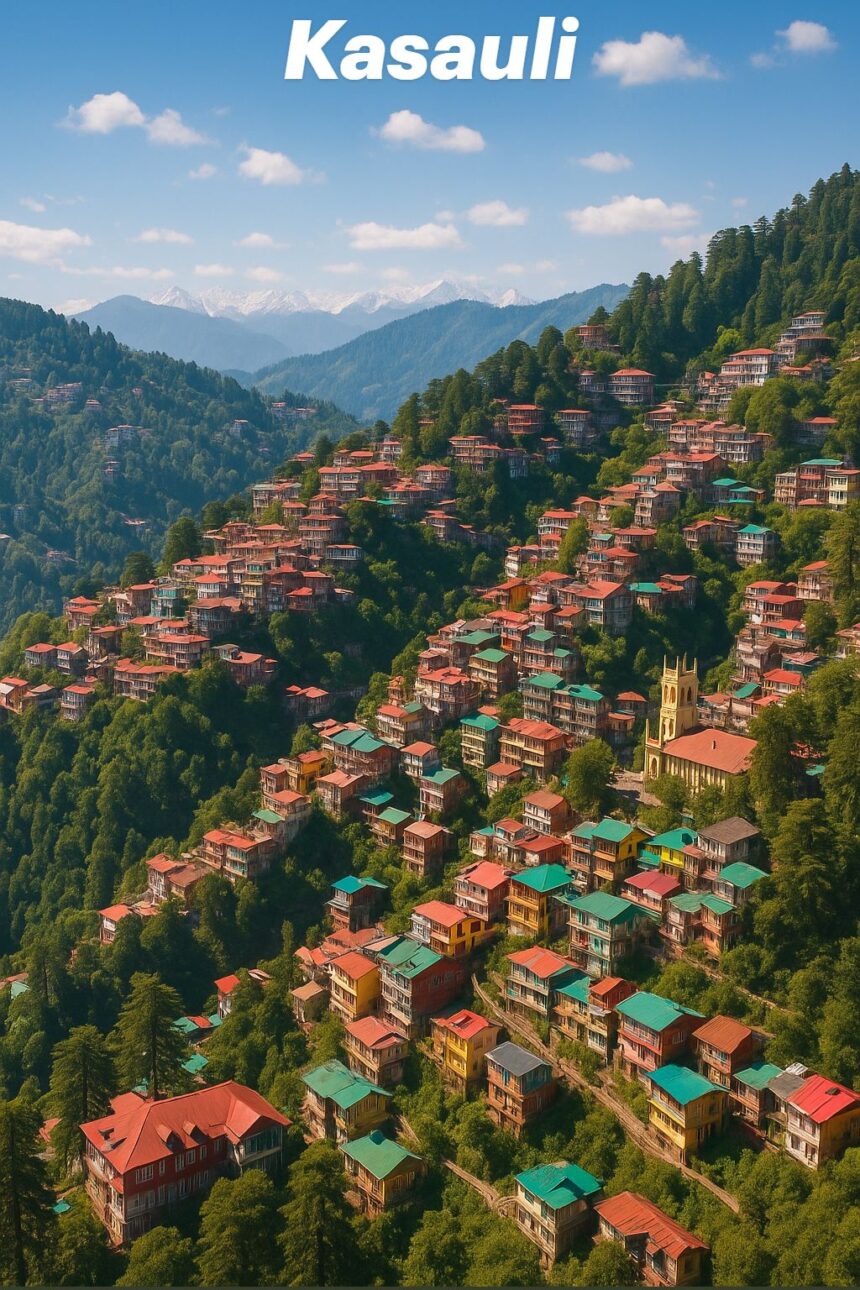Amazing Facts About Kasauli That Will Inspire Every Traveler
Kasauli, a quaint hill station in Himachal Pradesh, is a hidden gem tucked away in the Lower Himalayas. Known for its serene landscapes, colonial charm, and peaceful environment, Kasauli attracts travelers seeking relaxation, adventure, and cultural immersion. Often overshadowed by larger hill stations like Shimla and Manali, Kasauli offers a unique blend of history, nature, and heritage, making it a must-visit destination for both domestic and international tourists.
This guide explores Kasauli’s history, fascinating facts, timeline, significance, daily life impacts, FAQs, cultural observances, societal importance, and inspirational insights, all presented in an engaging, human-friendly tone.
History of Kasauli
Kasauli’s history is intertwined with colonial India and local traditions:
Early Settlement: The area was originally inhabited by small hill tribes who lived in harmony with the lush forests and hills.
British Era (1840s): Kasauli was established as a cantonment town by the British in the mid-19th century. Its elevation and climate made it a perfect retreat for British officers and their families.
Colonial Architecture: The British left behind iconic colonial-style buildings, churches, and military structures that still define Kasauli’s charm.
Post-Independence: After India gained independence in 1947, Kasauli retained its calm, colonial ambiance. It became popular among domestic tourists seeking a quiet retreat from bustling cities.
Key Facts About Kasauli
Scenic Beauty: Rolling hills, pine forests, and mist-laden valleys make Kasauli a visual treat year-round.
Sunset Point: Offers panoramic views of the surrounding hills and a perfect spot for photography.
Christ Church: Built in the mid-19th century, this church is a testament to Kasauli’s colonial heritage.
Manki Point: A popular viewpoint and temple dedicated to Lord Hanuman, offering panoramic Himalayan views.
Nature Walks: Kasauli has multiple nature trails like Gilbert Trail and Sunset Trail, ideal for peaceful walks.
Educational Institutions: Home to St. Thomas’ Church, the Lawrence School, and other historic educational establishments.
Cool Climate: With temperatures ranging from 5°C to 25°C, Kasauli is a refreshing escape throughout the year.
Local Cuisine: Small cafes and bakeries serve Himachali and continental delicacies, offering delightful culinary experiences.
Wildlife and Birds: Pine forests and surrounding greenery attract various bird species and small wildlife, making it ideal for nature enthusiasts.
Eco-Tourism and Adventure: Trekking, photography, and nature exploration are popular among environmentally conscious travelers.
Timeline of Kasauli
Early Settlements: Small hill tribes inhabit the region, maintaining forests and agricultural practices.
1842: British establish Kasauli as a cantonment town.
19th–20th Century: Colonial infrastructure, churches, and military facilities are developed.
1947: India gains independence; Kasauli retains its colonial charm and becomes a favored hill station.
21st Century: Modern tourism flourishes alongside eco-friendly initiatives and heritage preservation.
Significance of Kasauli
Tourism: A serene hill station that attracts domestic and international travelers.
Cultural Heritage: Colonial architecture and historic churches reflect India’s British-era legacy.
Environmental Importance: Forested hills and trails support biodiversity and eco-tourism initiatives.
Educational Value: Historic schools and institutions highlight the town’s academic significance.
Daily Life Benefits: Tourism supports local employment, small businesses, and hospitality sectors.
Daily Life Impacts
Employment: Hotels, cafes, shops, and guided tours provide livelihoods for locals.
Community Engagement: Festivals, nature walks, and heritage activities strengthen community interactions.
Urban Development: Roads, healthcare facilities, and markets improve residents’ quality of life.
Eco-Conscious Living: Locals participate in sustainable tourism and conservation practices.
Cultural Pride: Residents maintain traditions, festivals, and local crafts, preserving identity and heritage.
Observance and Important Points
Respect Nature: Stick to marked trails, avoid littering, and respect wildlife.
Cultural Etiquette: Dress modestly when visiting churches and temples.
Support Local Economy: Purchase handicrafts, local produce, and souvenirs from local artisans.
Festival Participation: Engage in local festivals like Diwali and Christmas for cultural immersion.
Adventure Safety: Follow guidelines for trekking and outdoor activities to ensure safety.
FAQs About Kasauli
Q1: When is the best time to visit Kasauli?
A: March to June and September to November are ideal for sightseeing and outdoor activities.
Q2: How do I reach Kasauli?
A: Kasauli is accessible via road from Chandigarh (60 km) and Shimla (77 km). The nearest airport is Chandigarh International Airport.
Q3: Is Kasauli family-friendly?
A: Yes, with calm nature trails, viewpoints, and safe areas suitable for children and elderly travelers.
Q4: How many days are recommended for exploring Kasauli?
A: A 2–4 day trip is sufficient to explore nature walks, viewpoints, churches, and local markets.
Q5: What are the must-visit attractions?
A: Christ Church, Sunset Point, Manki Point, Gilbert Trail, and Kasauli Brewery.
Social and Cultural Significance
Heritage Preservation: Colonial architecture, churches, and cantonment buildings are maintained as a cultural treasure.
Community Participation: Residents engage with tourists through guided walks, homestays, and local events.
Environmental Awareness: Trekking trails and forest conservation initiatives educate visitors on eco-friendly practices.
Cultural Exchange: Tourists experience Himachali traditions, while locals gain exposure to global cultures.
Educational Outreach: Schools and historic institutions provide educational and cultural awareness to visitors.
Wishing and Inspirational Perspective
Kasauli inspires through its serene environment, culture, and history:
Tranquility: Misty pine forests and quiet valleys provide a perfect escape for peace and mindfulness.
Photography and Creativity: Scenic landscapes and colonial architecture encourage creative pursuits.
Cultural Learning: Christ Church, festivals, and local traditions offer valuable insights into heritage.
Community Spirit: Engaging with locals fosters meaningful connections and cultural appreciation.
Eco-Friendly Inspiration: Trekking, nature walks, and sustainable tourism encourage respect for the environment.
Conclusion: Importance in Daily Life and Society
Kasauli is more than a picturesque hill station; it is a symbol of heritage, nature, and cultural preservation. Its impact on daily life includes employment, education, community bonding, environmental awareness, and cultural pride. Socially, it strengthens tourism-driven economic growth, promotes intercultural understanding, and encourages sustainable living.
The 10 amazing facts about Kasauli showcase why this hill station continues to charm travelers with its colonial elegance, misty landscapes, and serene environment. Respecting local traditions, engaging in eco-tourism, and supporting the local economy ensures a positive contribution to Kasauli’s society, heritage, and natural environment.








